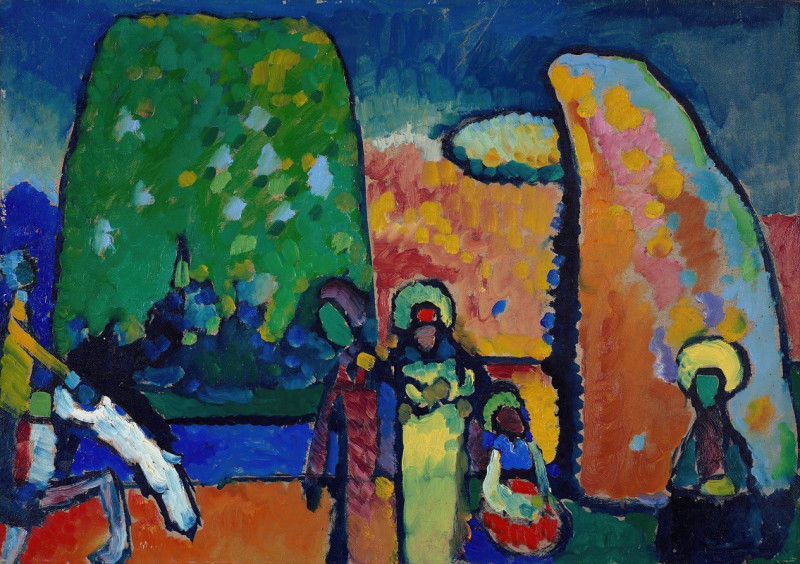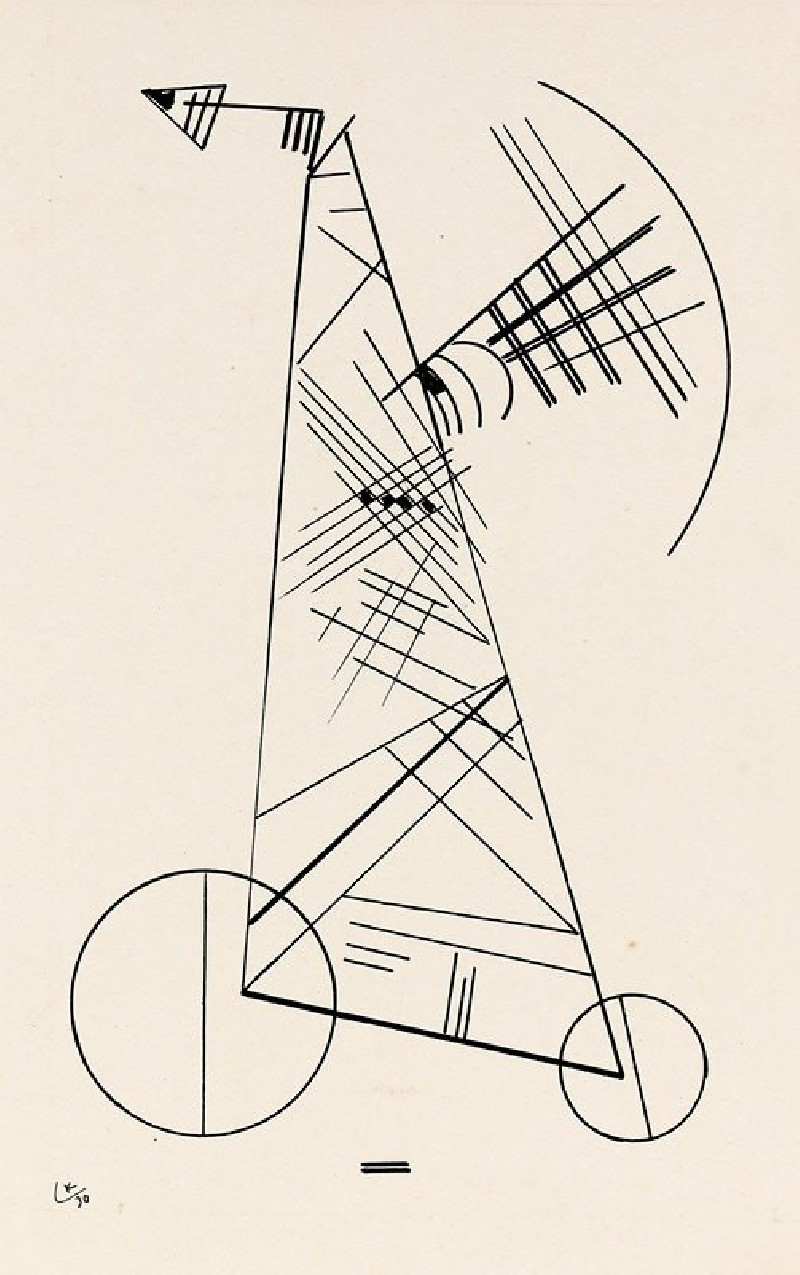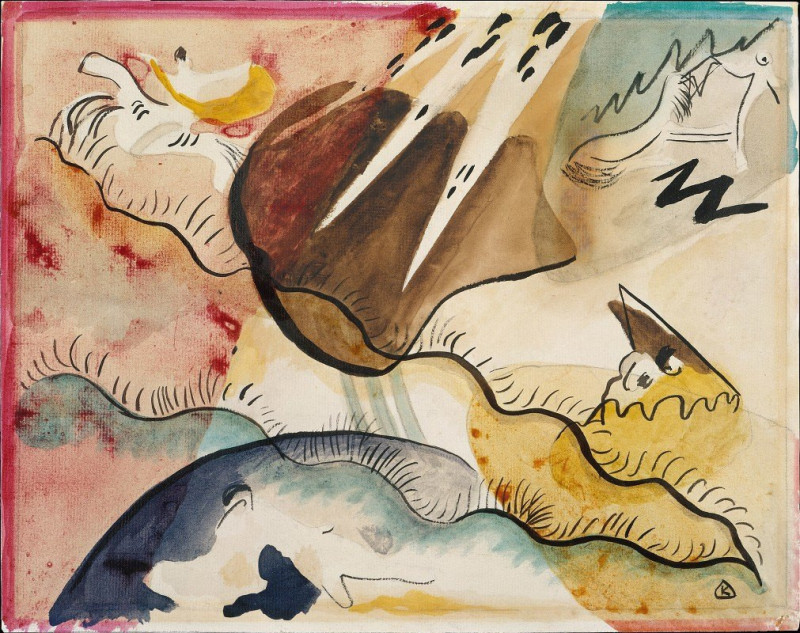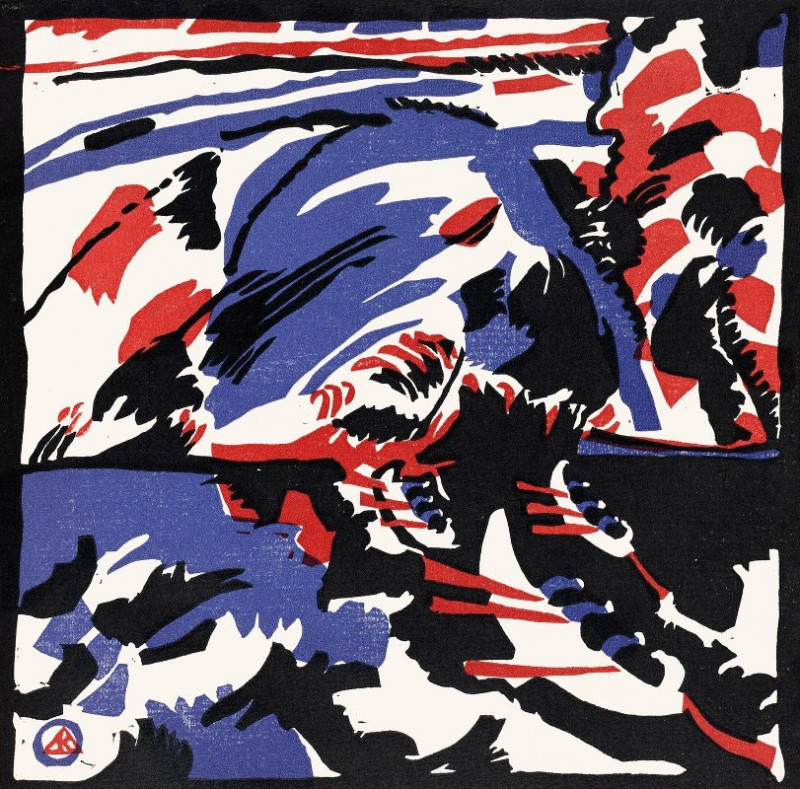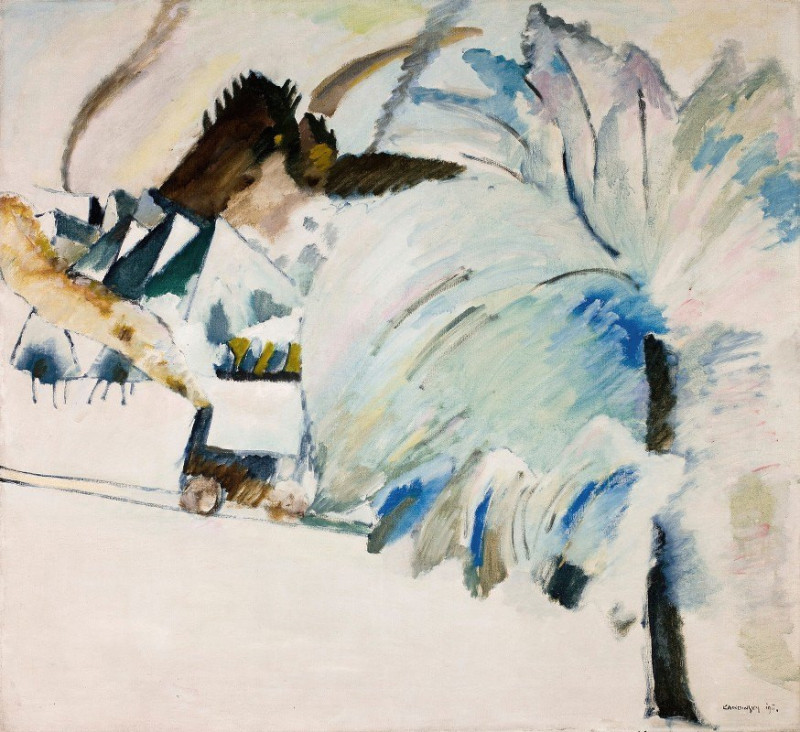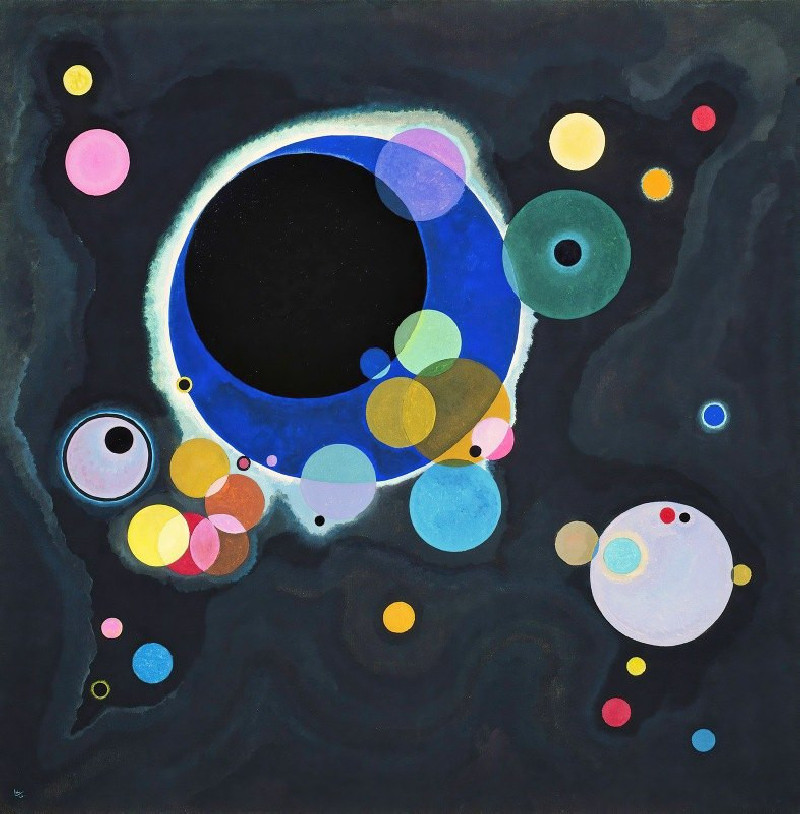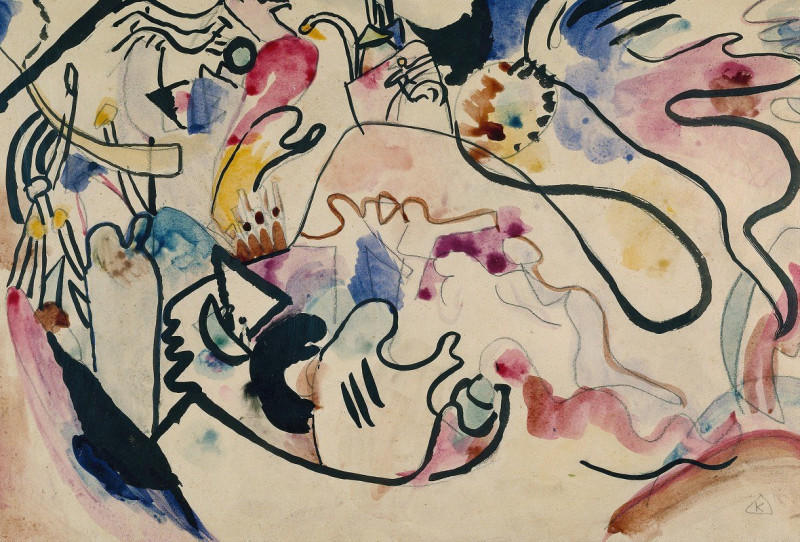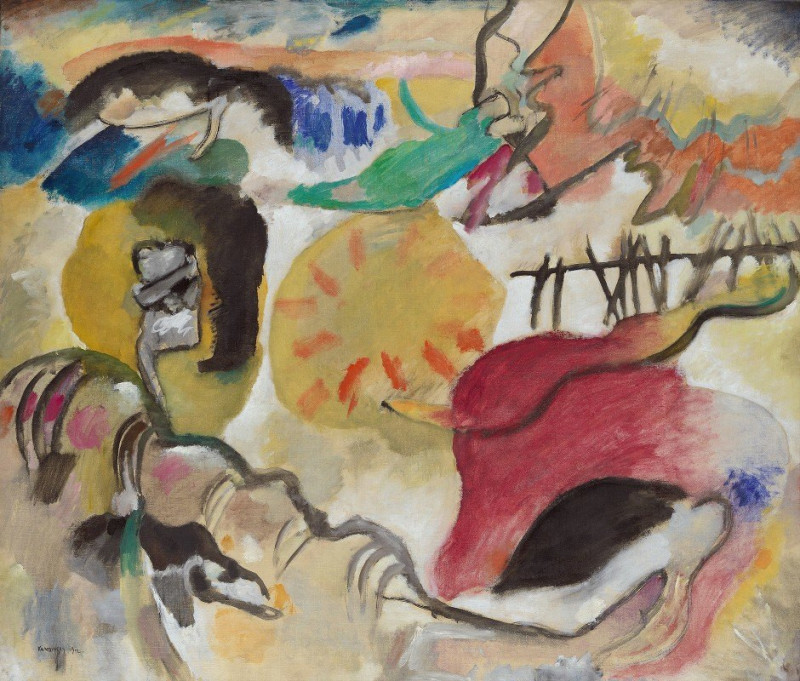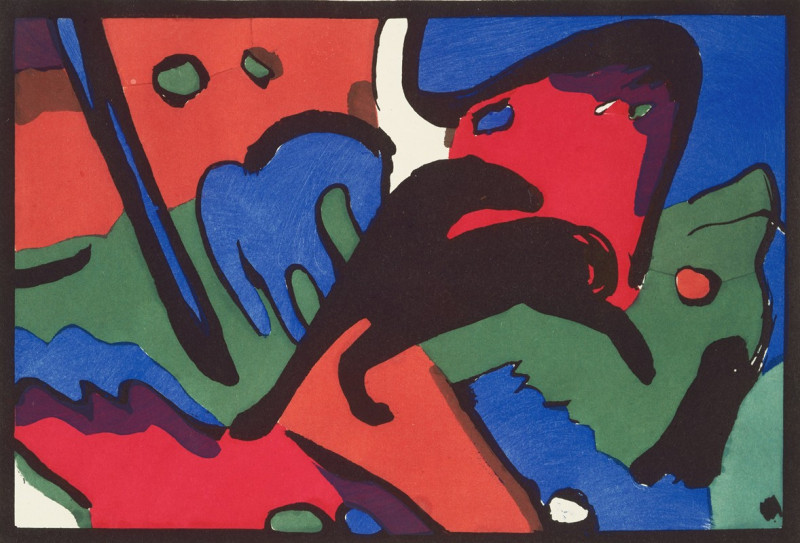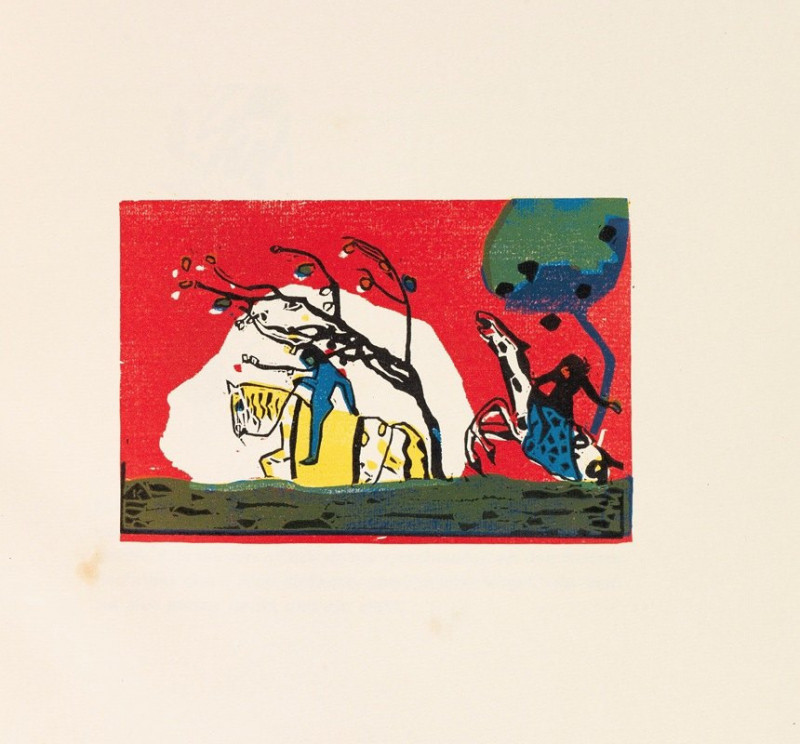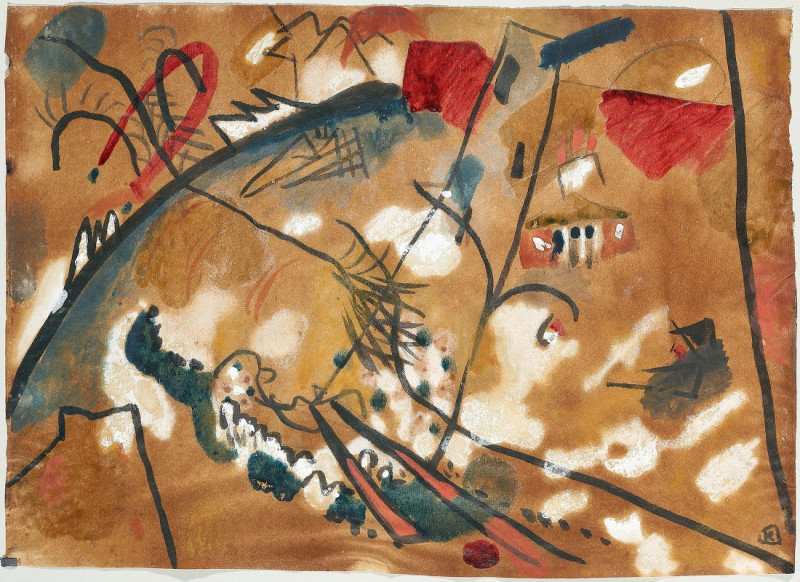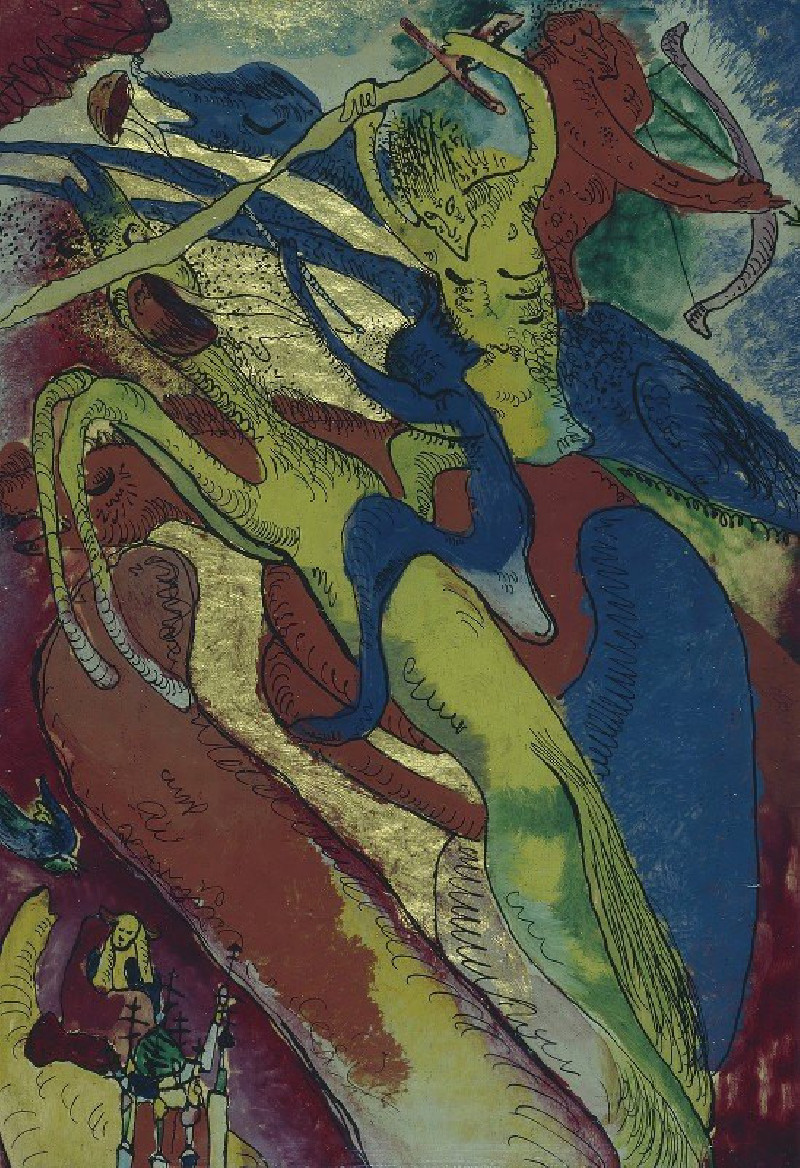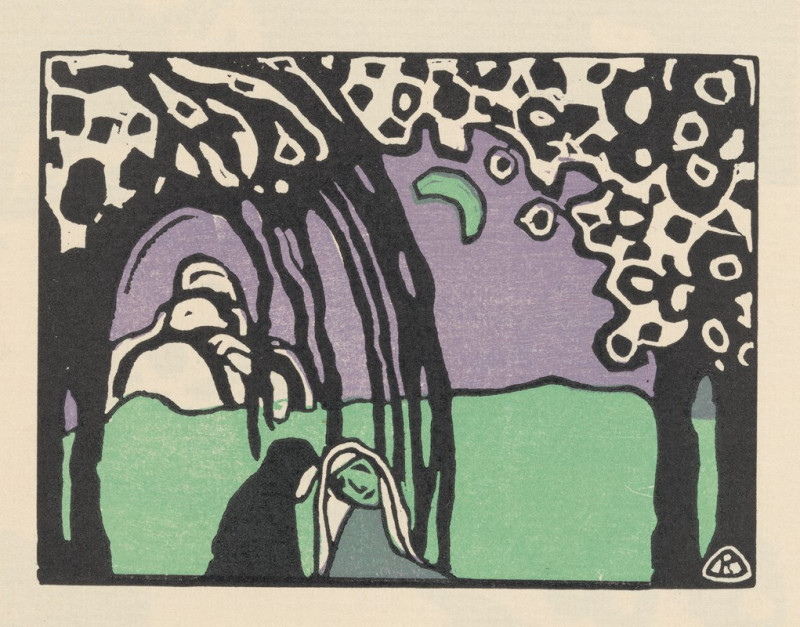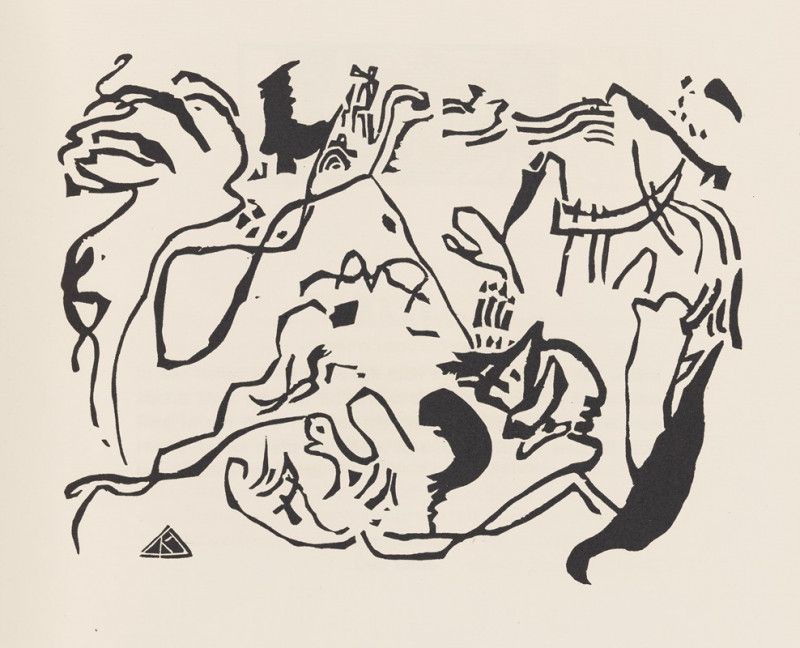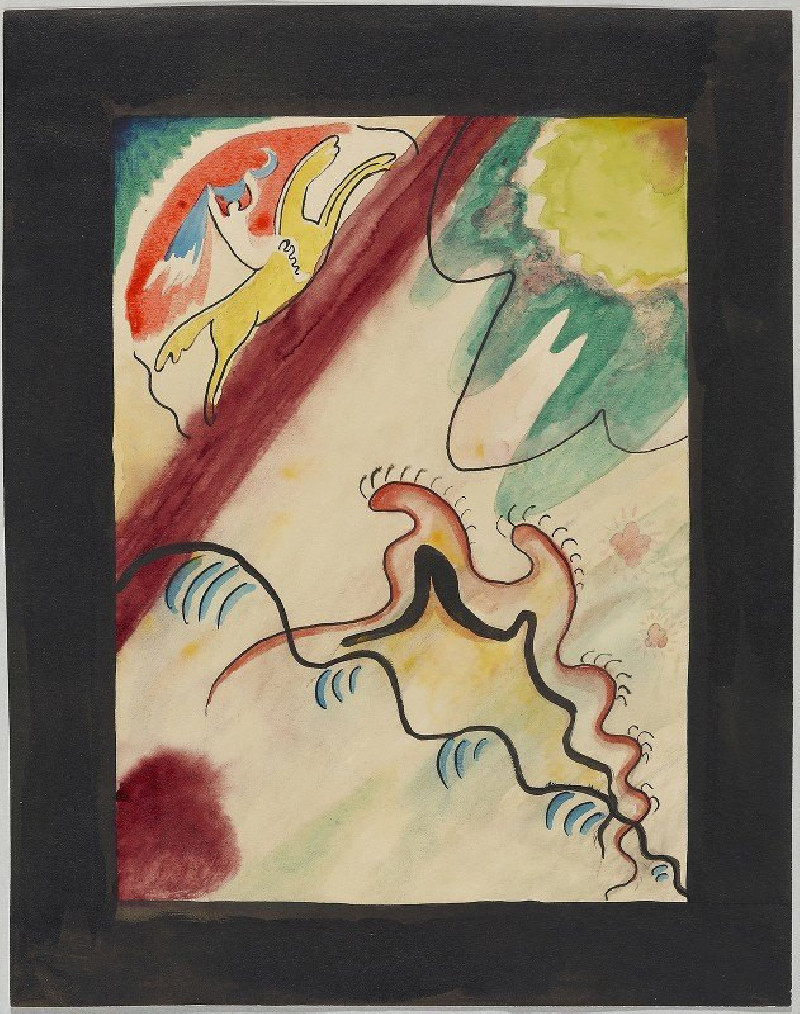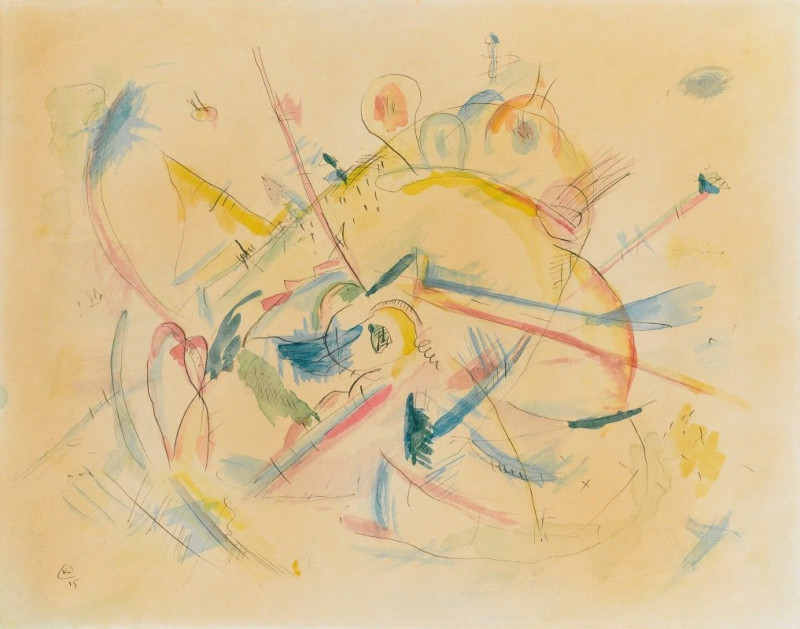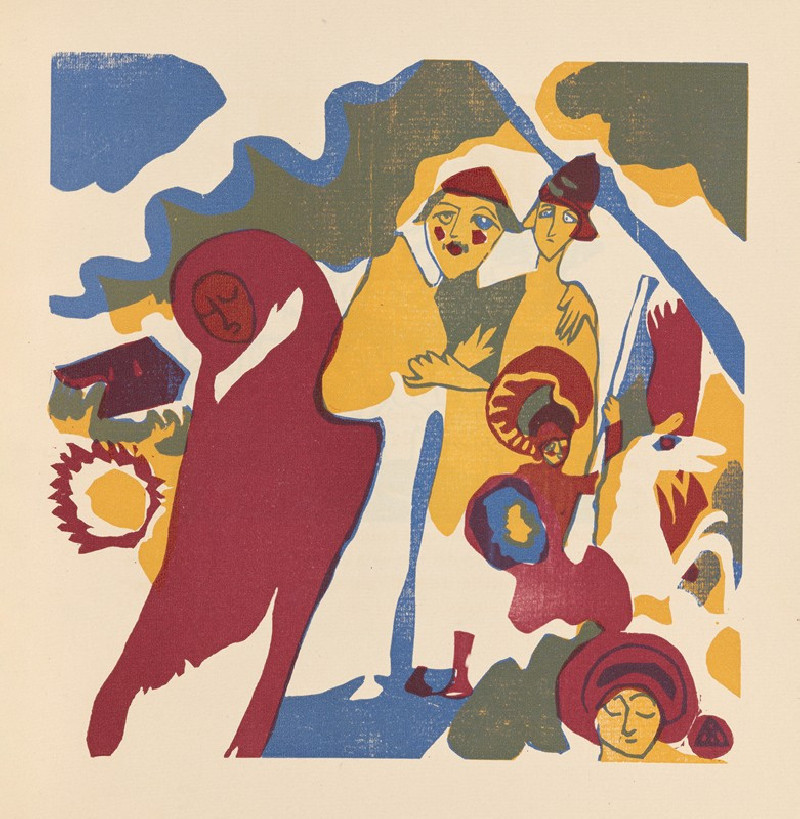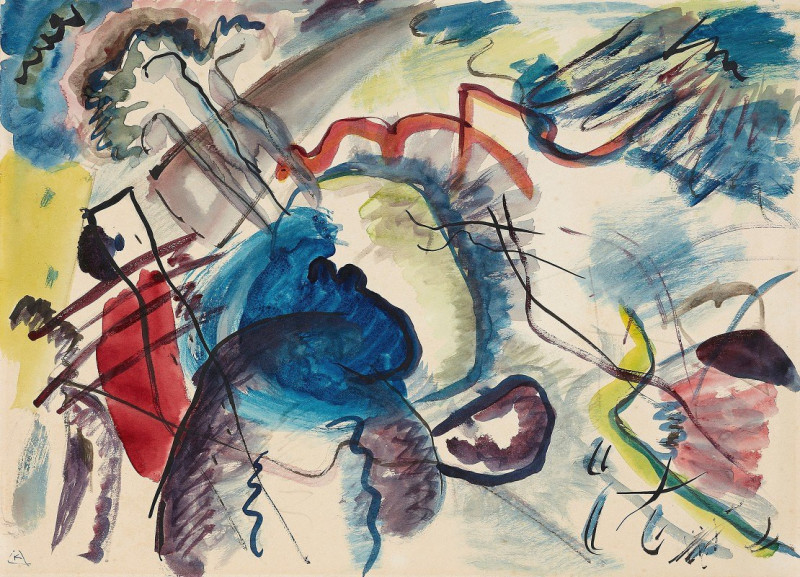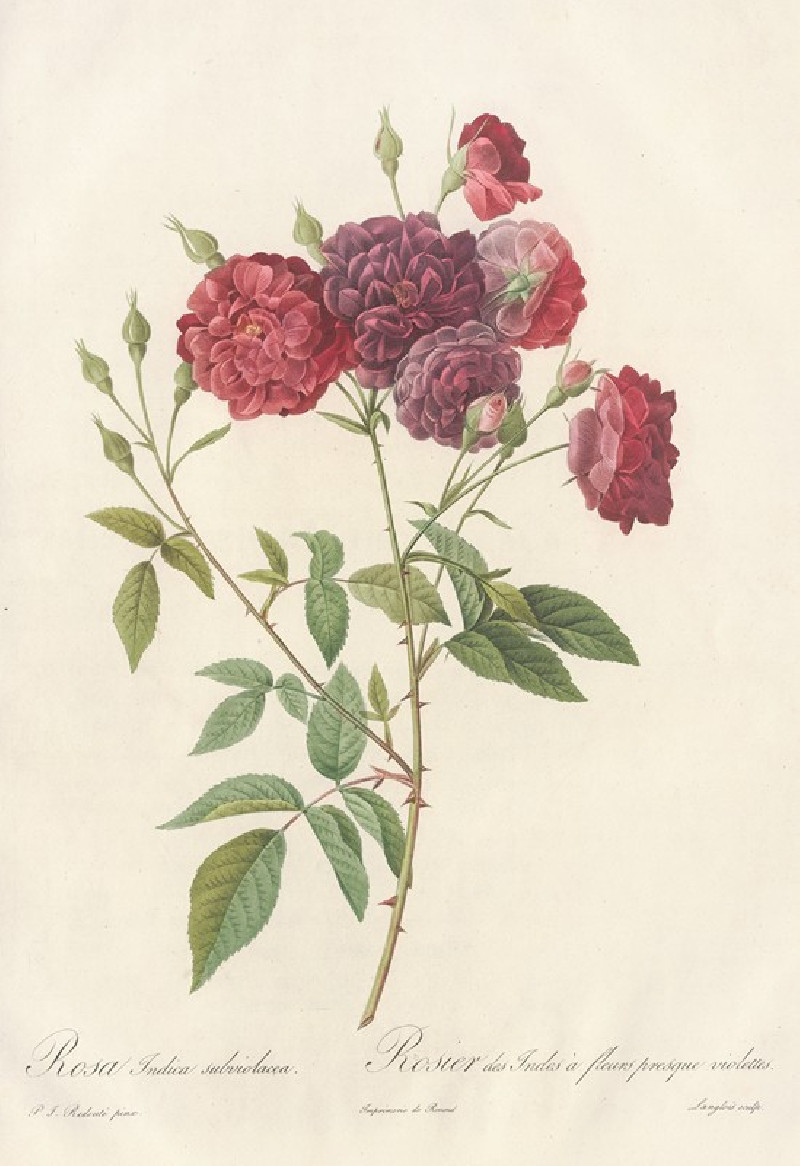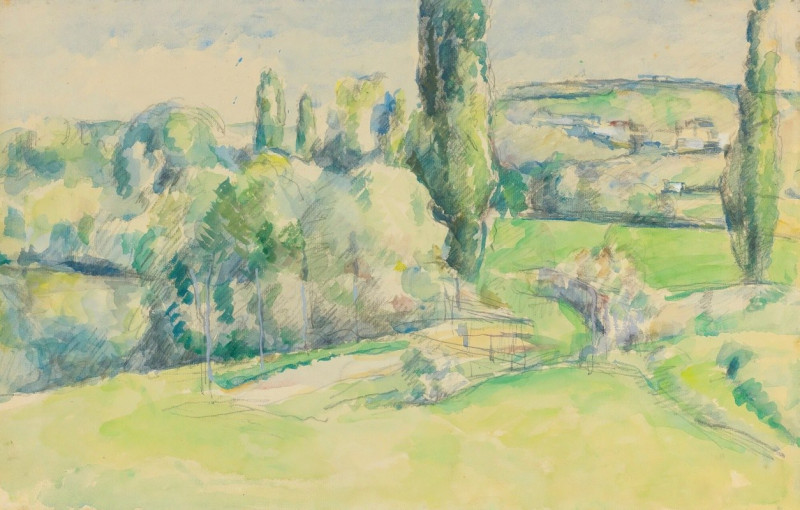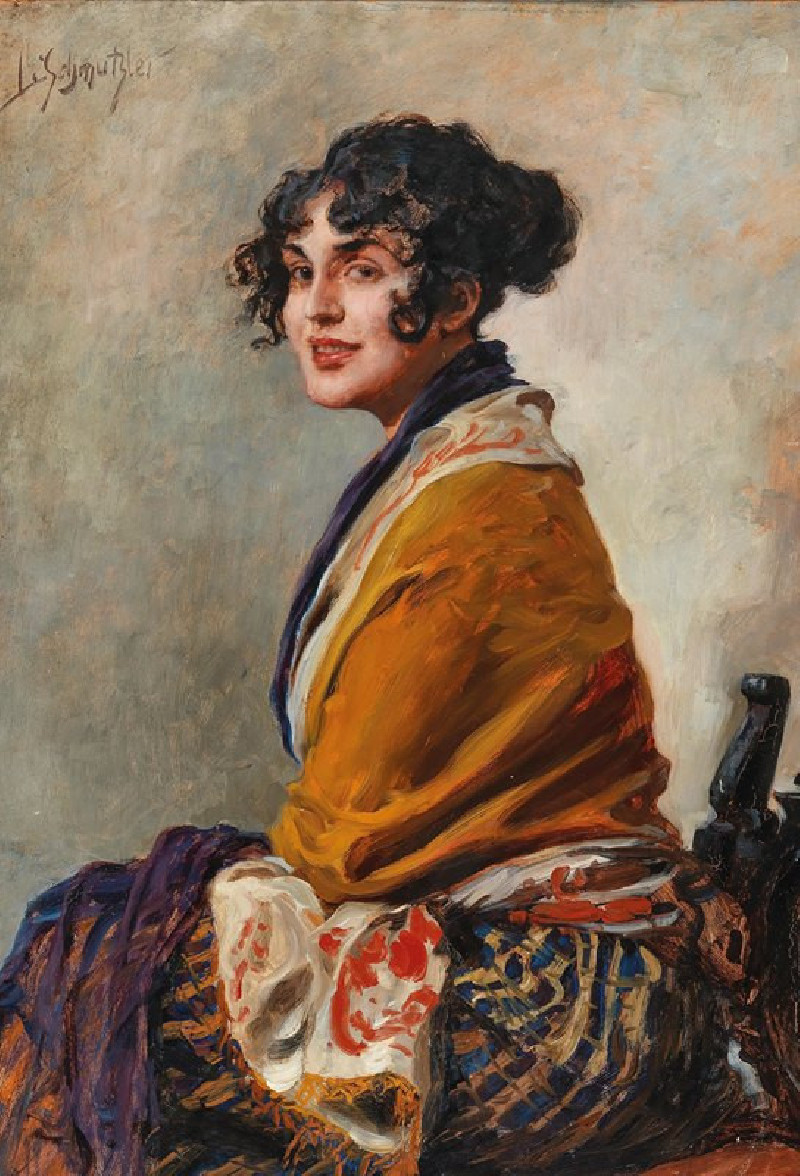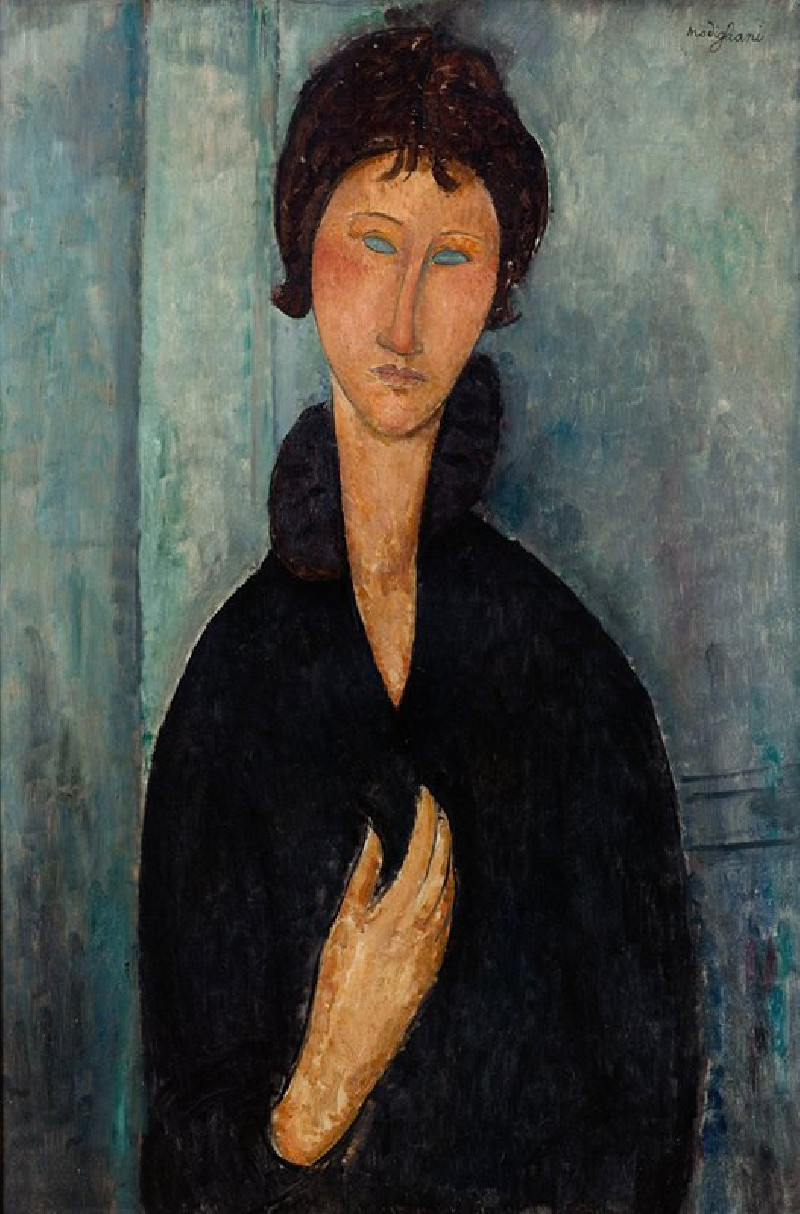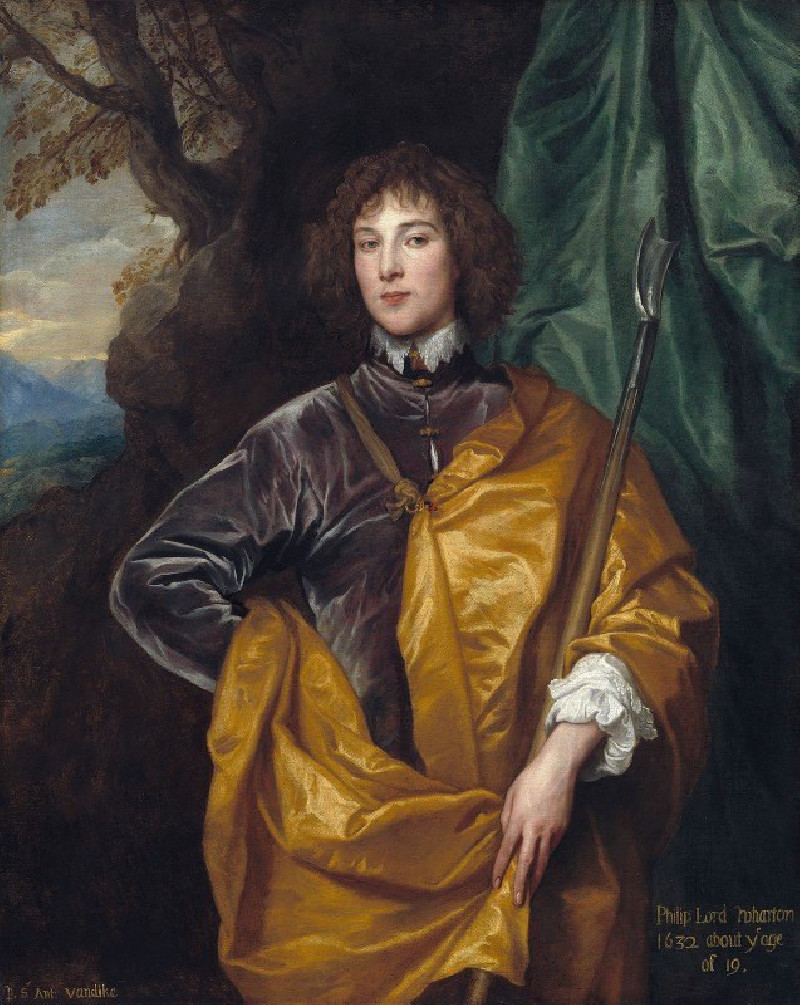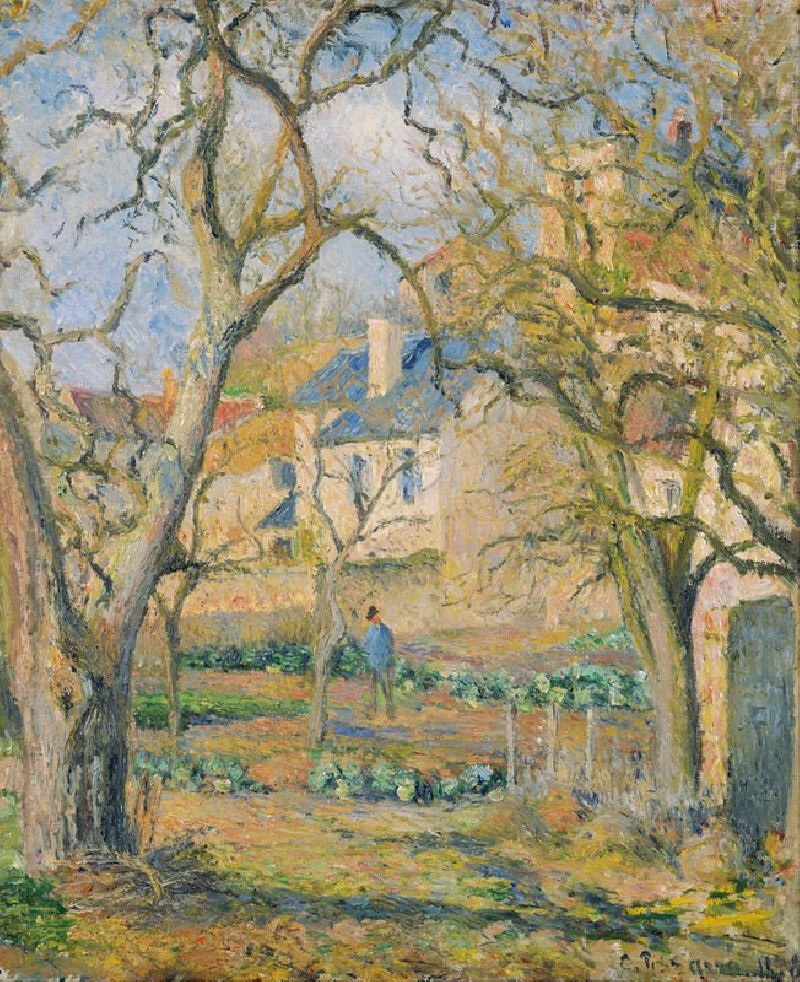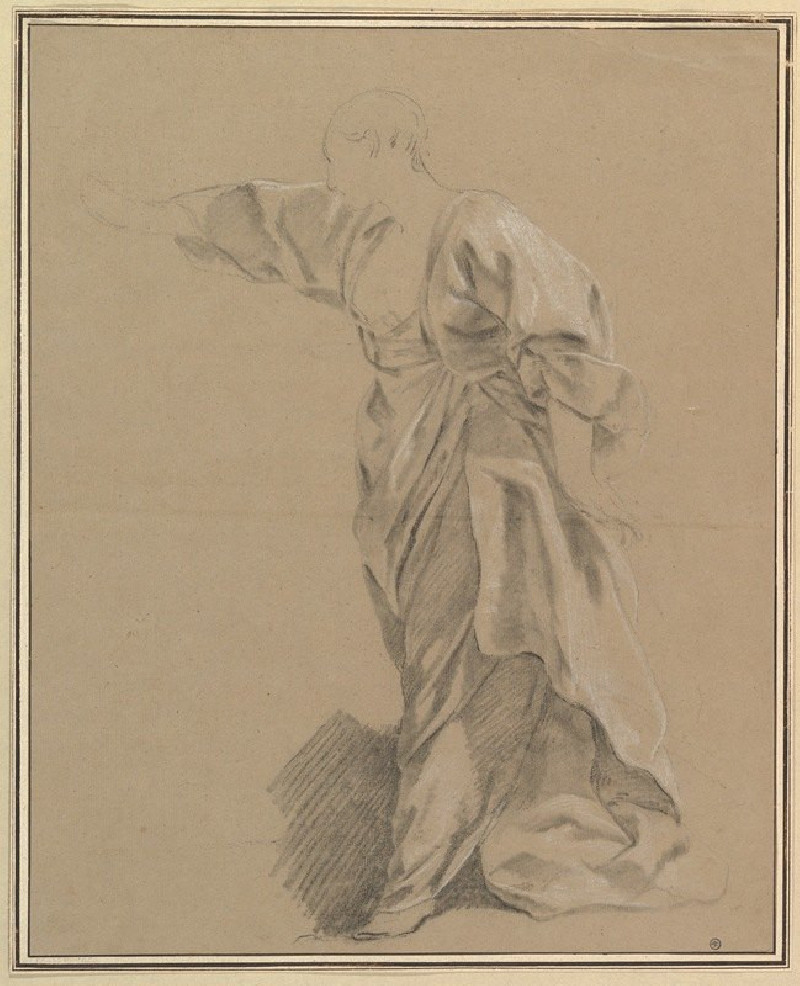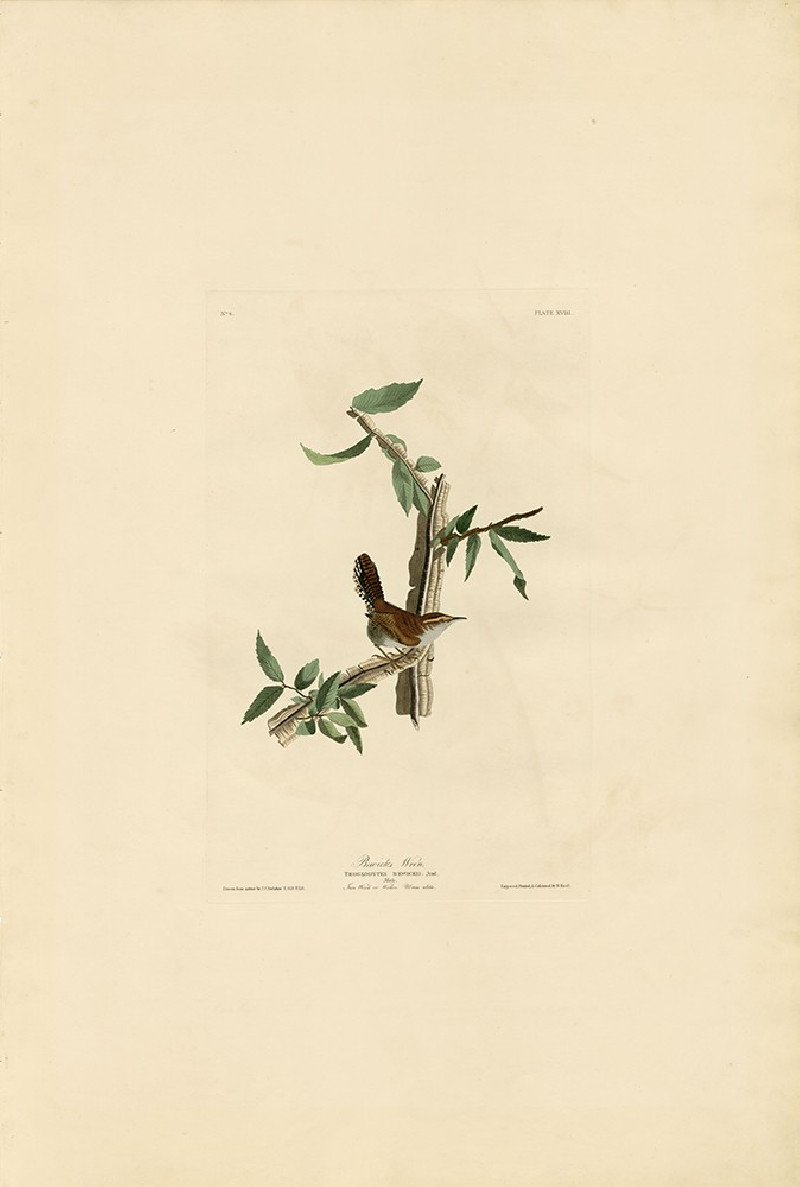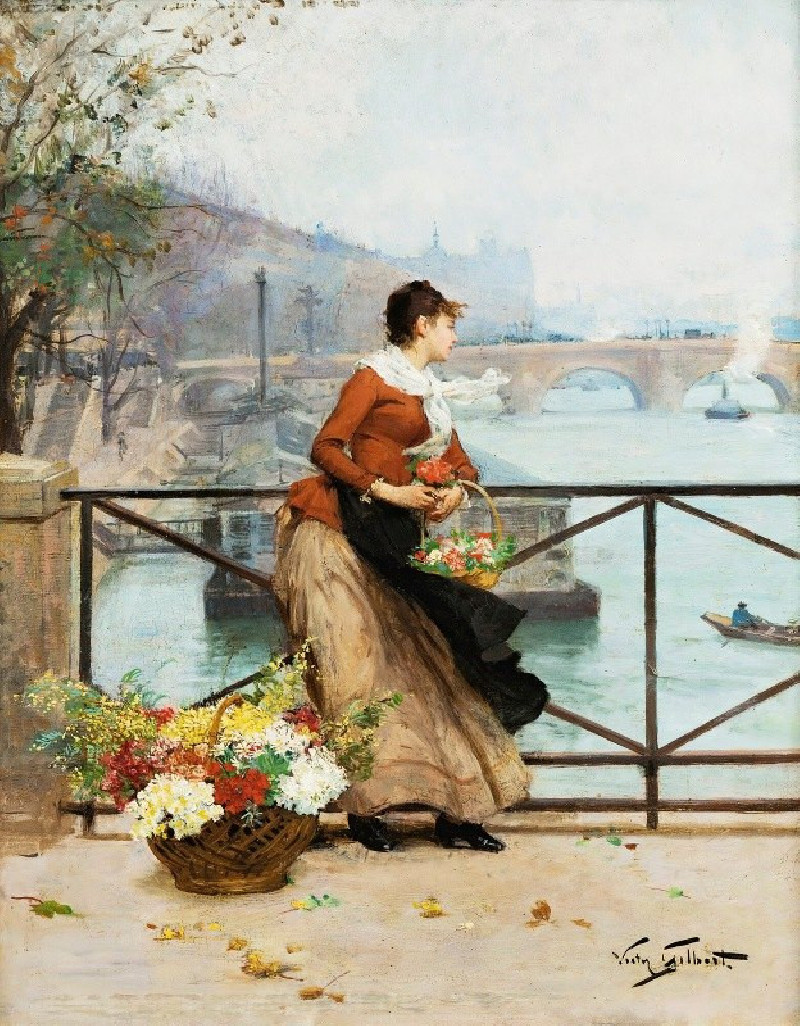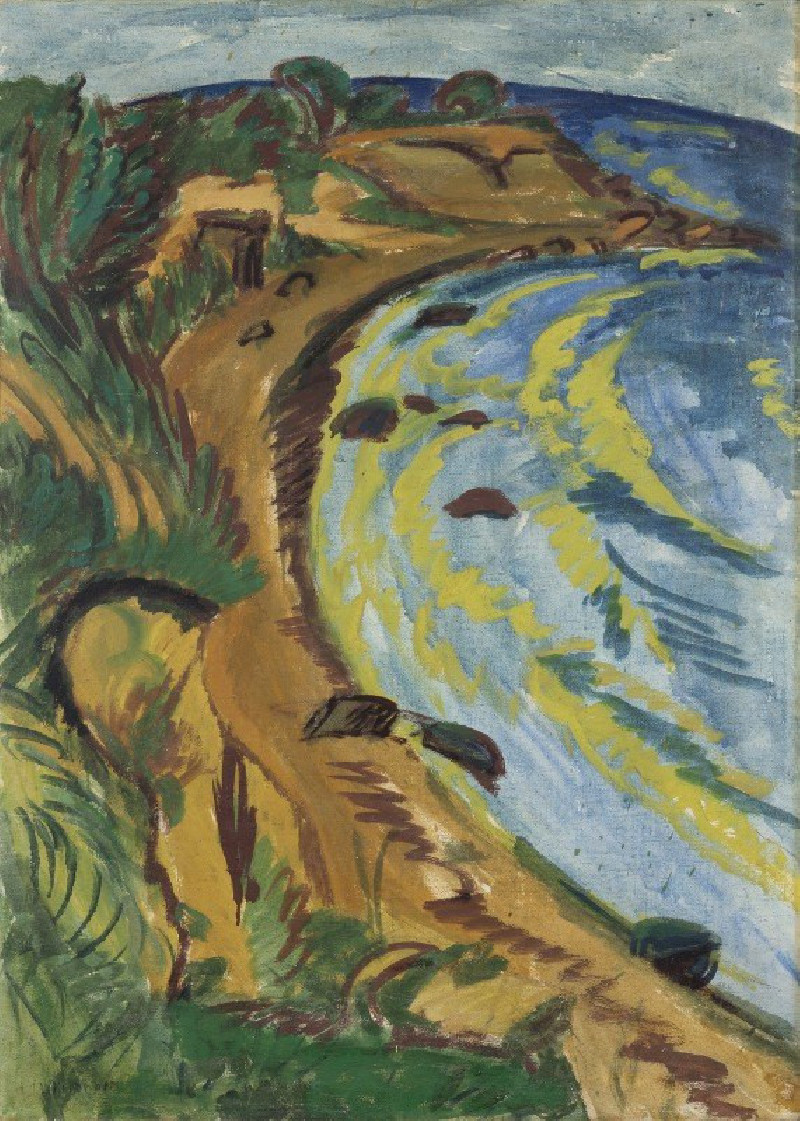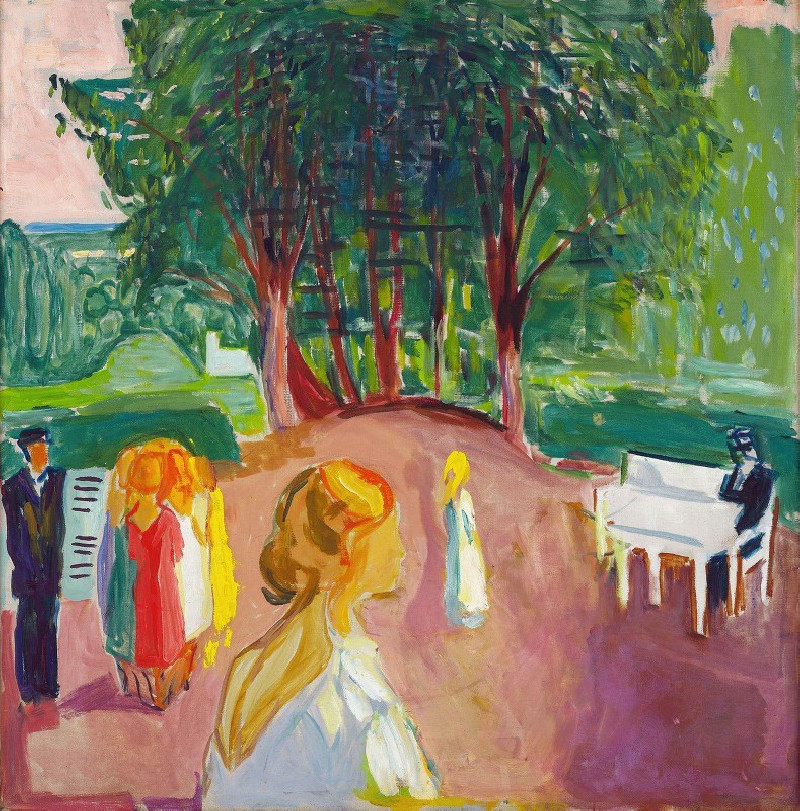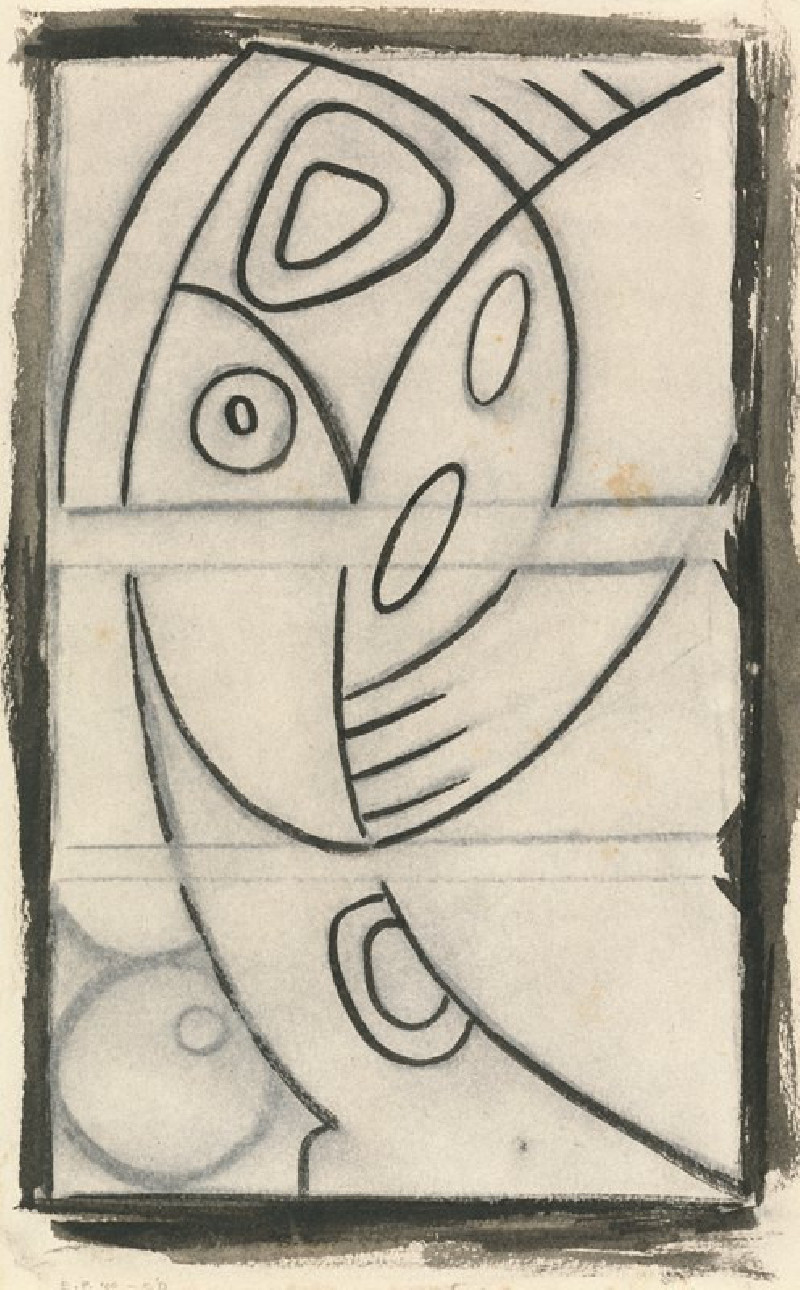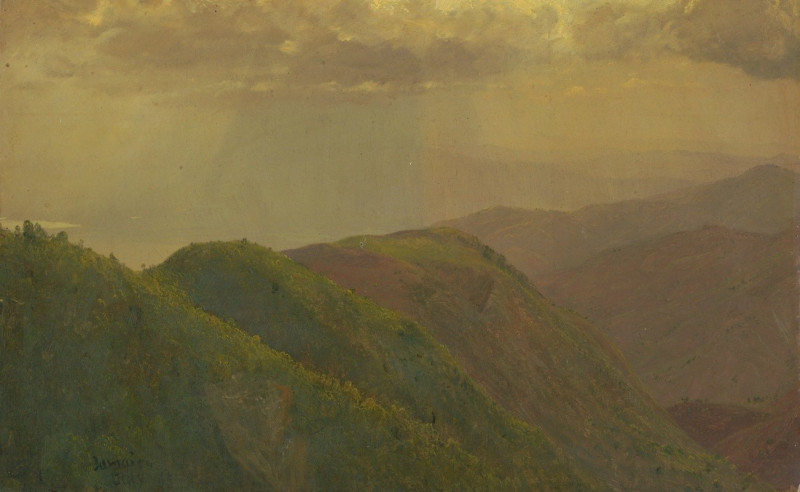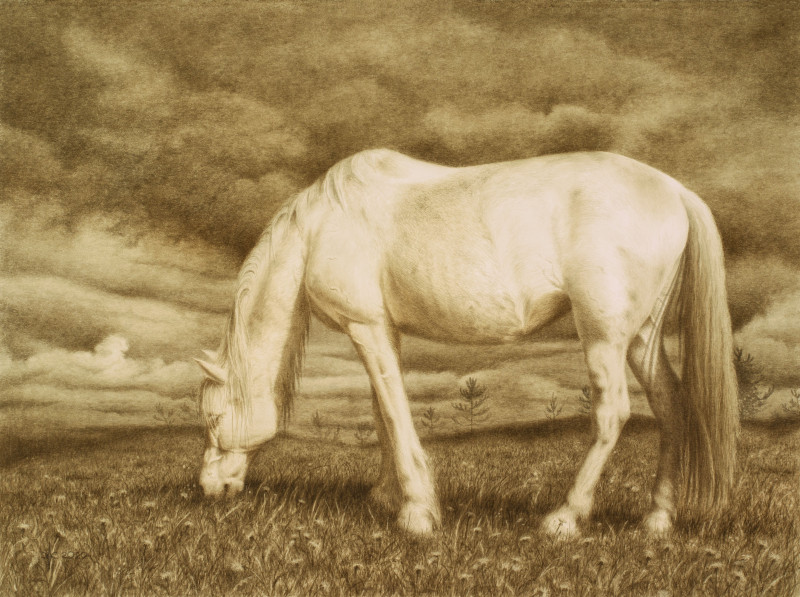Study on Improvisation No. 2 (Funeral March) (1909)
Technique: Giclée quality print
Recommended by our customers
More about this artwork
"Study on Improvisation No. 2 (Funeral March)" by Wassily Kandinsky is a vibrant and complex painting that captures a blend of abstract forms and figurative elements. Created in 1909, this work illustrates Kandinsky's movement towards abstraction and his interest in conveying emotional resonance through color and composition.The painting features a melange of bold colors and dynamic shapes. In the foreground, on the left side, there are figures that can be interpreted as part of a procession, possibly referencing the titular "Funeral March." The figures are stylized and somewhat abstract, not giving away much detail but suggesting motion and emotion through their positioning and the interplay of colors.The background of the painting is divided into segments of contrasting colors and shapes, creating a sense of depth and complexity. The green, leafy shapes could be trees, dominating the upper middle portion of the painting, with a patches of blue suggesting the sky or water beneath them. The rest of the background is a kaleidoscope of colors, with oranges, reds, and yellows perhaps representing other elements of the landscape or abstract emotions.The use of color is particularly striking and is a key component of Kandinsky's style during this period. He believed colors and shapes had intrinsic spiritual values and could evoke specific emotional responses. The vibrant palette in "Study on Improvisation No.
Delivery
Returns
Wassily Wassilyevich Kandinsky was a Russian painter and art theorist. Kandinsky is generally credited as the pioneer of abstract art. Born in Moscow, Kandinsky spent his childhood in Odessa, where he graduated at Grekov Odessa Art school. He enrolled at the University of Moscow, studying law and economics. Successful in his profession—he was offered a professorship (chair of Roman Law) at the University of Dorpat today Tartu, Estonia)—Kandinsky began painting studies (life-drawing, sketching and anatomy) at the age of 30.

